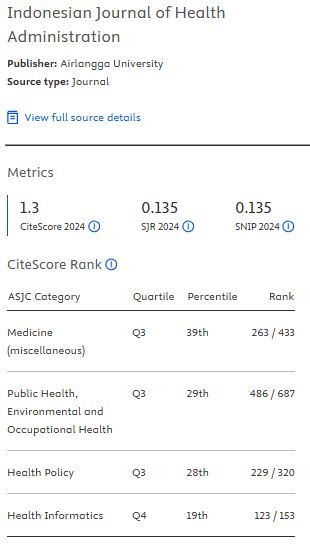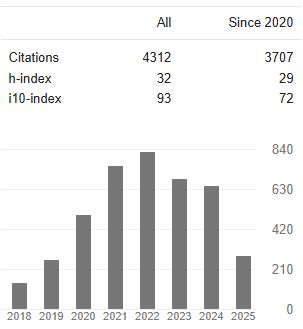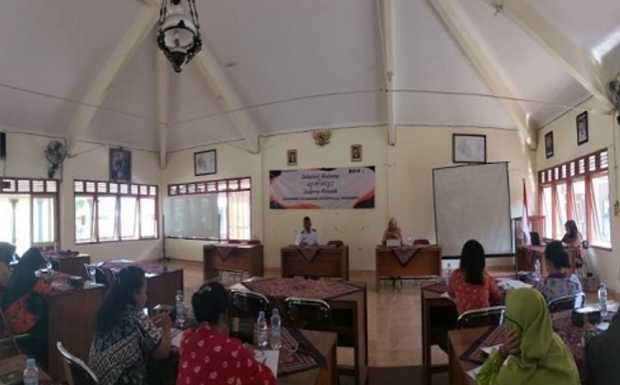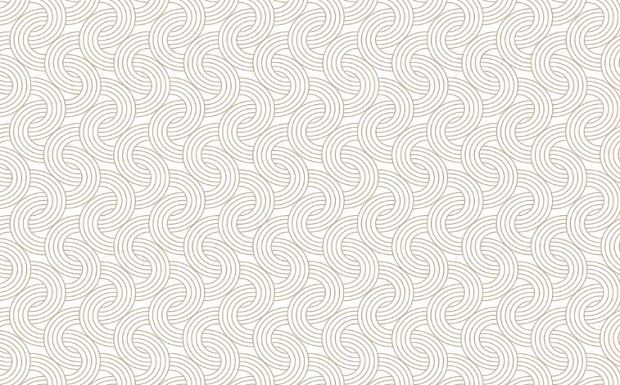Guide For Author
GUIDELINE FOR AUTHOR
INDONESIAN JOURNAL OF HEALTH ADMINISTRATION (JURNAL ADMINISTRASI KESEHATAN INDONESIA)
Indonesian Journal of Health Administration (Jurnal Administrasi Kesehatan Indonesia) receives scientific works in the form of ORIGINAL ARTICLES, COMMENTARY, LITERATURE REVIEWS, and SHORT COMMUNICATIONS. The manuscript must be original and unpublished. If the manuscript is accepted for publication in IJHA, then the submission of the manuscript shall not be permitted to publish the manuscript to other media.
The manuscript is typed on A4 size A-size HVS paper with 1 spaced on 1 side (not back and forth). Original and review articles are up to 4000 words (main text) with a structured abstract of up to 200 words and 30 references. Commentaries should be up to 1000 words with an unstructured abstract of up to 200 words and ten references. We also receive short communications, which should be up to 800 words long with only one table or figure, an unstructured abstract of up to 100 words, and five references. The font type used is Arial size 11 pt. Margin or border of writing from the edge of the paper is 2.5 cm on all four sides. The script is typed in (2) two columns. You are not allowed to use a footnote. The manuscript file is sent in MS Word format. The manuscript is written in English with effective and academic language. The editor-in-chief appointed by the editors will judge all incoming scientific articles.
A. Original Article
1. TITLE should be concise and clear (maximum 12 words) without any subtitles. The title preferably does not show an analytical relationship but rather displays the ultimate research findings. You are not allowed to use abbreviations except for common abbreviations (e.g., DNA).
2. ABSTRACT is presented in a structured paragraph written in English and Bahasa Indonesia (Approximately 200 words). The abstract should contain the background, aims, method, results, and conclusion. Three to five keywords are written alphabetically under the abstract.
3. INTRODUCTION covers the background of the problem, the formulation of the problem, the research objectives, and the benefits of the research findings.
4. METHOD contains research design; time and location of research; population, sample, and sampling method; how research works; and analysis of research results.
5. RESULTS AND DISCUSSION contains the research results in accordance with the objectives of the study, accompanied by scientific discussions and arguments. Tables, graphs, and images that support the results of the study can be included. The discussion focused on discussing the main results of the study. The provisions for writing tables, graphs, and drawings are as follows:
a. TABLES should be attached to the body article rather than an appendix. Please follow these instructions in writing the table: (1) Written in 1 spaced format, Arial font, 11 pt font size, no bold, centered; (2) Show "what", "where", "when"; (3) title should be written at the top before the table; (4) Format table uses open table; (5) Not allowed to exceed the margin of writing, (6) No more than 3 tables allowed in each article, (7) Tables originating from citation shall explain their source.
b. GRAPHS OR DRAWINGS should be attached in the body article rather than an appendix. Please follow these instructions in writing the graphs or drawing: (1) Write in single-spaced, Arial font, 9pt font size, bold, centered; (2) the title of the image is written at the bottom of the image; (3) Not allowed to exceed the writing margin, (4) Maximum 3 Images are allowed in each article, (5) graphs, or images originating from the citation shall be written source. Both tables and images are not allowed to be presented in coloring legend, and please use only black color in the article.
6. CONCLUSIONS contain a brief statement about the results obtained associated with the objectives, and hypotheses (if any) have been proposed if any suggestions or recommendations may be included in the conclusion.
7. DECLARATIONS. All manuscripts must contain the following sections under the heading 'Declarations' - Ethics approval and consent to participate - Conflict of interest - Availability of data and material - Authors' contributions - Funding source - Acknowledgments. If any of the sections are not relevant to your manuscript, please include the heading and write 'Not applicable' for that section.
8. REFERENCES style used by IJHA should be written based on the Harvard Reference format 1 (author-date) already available in the Mendeley or Zotero reference style database. Please remain that we only receive papers that the references list is managed by Mendeley or Zotero software. At least 70% of bibliographies come from scientific articles (Journals). We are concerned about developing scientific knowledge and problem-solving in any health administration issues, so please only use references published not more than 5 years from your submission to IJHA.
B. Commentary
1. TITLE should be concise and clear (maximum 12 words) without any subtitles. The title preferably does not show an analytical relationship but rather displays the ultimate research findings. You are not allowed to use abbreviations except for common abbreviations (e.g., DNA).
2. ABSTRACT for the manuscript should be unstructured and not exceed 200 words. The abstract should describe the main statements of the commentary. Abbreviations should be used sparingly in the abstract. If used, then only common ones should be employed. Citations and references should not be given in abstracts.
3. INTRODUCTION should clearly state the background of the Commentary theme. At the end of the introduction, a brief statement of the discussion should be given.
4. DISCUSSION should contain the body of the article. All arguments that are important for the commentary should be discussed extensively here. If necessary, the section may be subdivided with short, informative headings. It should contain a maximumly of 2 tables or figures.
5. CONCLUSION has the main conclusion of the commentary, and a clear explanation of its importance should be given.
6. DECLARATIONS. All manuscripts must contain the following sections under the heading 'Declarations' - Ethics approval and consent to participate - Conflict of interest - Availability of data and material - Authors' contributions - Funding source - Acknowledgments. If any of the sections are not relevant to your manuscript, please include the heading and write 'Not applicable' for that section.
7. REFERENCES style used by IJHA should be written based on the Harvard Reference format 1 (author-date) already available in the Mendeley or Zotero reference style database. Please remain that we only receive papers that the references list is managed by Mendeley or Zotero software. At least 70% of bibliographies come from scientific articles (Journals). We are concerned about developing scientific knowledge and problem-solving in any health administration issues, so please only use references published not more than 5 years from your submission to IJHA.
C. Literature Review
1. TITLE should be concise and clear (maximum 12 words) without any subtitles. The title preferably does not show an analytical relationship but rather displays the ultimate research findings. You are not allowed to use abbreviations except for common abbreviations (e.g., DNA).
2. ABSTRACT is presented in a structured paragraph written in English and Bahasa Indonesia (Approximately 200 words). The abstract should contain the background, aims, method, results, and conclusion. Three to five keywords are written alphabetically under the abstract.
3. INTRODUCTION covers the background of the problem, the formulation of the problem, the research objectives, and the benefits of the research findings.
4. METHOD contains the research design, how research works, as well as analysis of research results.
5. RESULT AND DISCUSSION contains the results of research in accordance wif the objectives of the study, accompanied by scientific discussions and arguments. Tables, graphs, and images that support the results of the study can be included. The discussion focused on discussing the main results of the study.
6. CONCLUSIONS contain a brief statement about the results obtained associated with the objectives, and hypotheses (if any) have been proposed if any suggestions or recommendations may be included in the conclusion.
7. DECLARATIONS. All manuscripts must contain the following sections under the heading 'Declarations' - Ethics approval and consent to participate - Conflict of interest - Availability of data and material - Authors' contributions - Funding source - Acknowledgments. If any of the sections are not relevant to your manuscript, please include the heading and write 'Not applicable' for that section.
8. REFERENCES style used by IJHA should be written based on the Harvard Reference format 1 (author-date) already available in the Mendeley or Zotero reference style database. Please remain that we only receive papers that the references list is managed by Mendeley or Zotero software. At least 70% of bibliographies come from scientific articles (Journals). We are concerned about developing scientific knowledge and problem-solving in any health administration issues, so please only use references published not more than 5 years from your submission to IJHA.
D. Short Communications
1. TITLE should be concise and clear (maximum 12 words) without any subtitles. The title preferably does not show an analytical relationship but rather displays the ultimate research findings. You are not allowed to use abbreviations except for common abbreviations (e.g., DNA).
2. DISCUSSION should state opinion or response to topics of interest to the IJHA readership. It may contain only 1 table or figure, references, and the main text.
3. DECLARATIONS. All manuscripts must contain the following sections under the heading 'Declarations' - Ethics approval and consent to participate - Conflict of interest - Availability of data and material - Authors' contributions - Funding source - Acknowledgments. If any of the sections are not relevant to your manuscript, please include the heading and write 'Not applicable' for that section.
4. REFERENCES style used by IJHA should be written based on the Harvard Reference format 1 (author-date) already available in the Mendeley or Zotero reference style database. Please remain that we only receive papers that the references list is managed by Mendeley or Zotero software. At least 70% of bibliographies come from scientific articles (Journals). We are concerned about developing scientific knowledge and problem-solving in any health administration issues, so please only use references published not more than 5 years from your submission to IJHA.
E. Additional
Plagiarism in all scientific articles will be checked through TURNITIN software twice (prior to and after the review). For further explanation about the organization of articles, please go to the document template (here). Please, refer to the STROBE checklist for observational studies.























